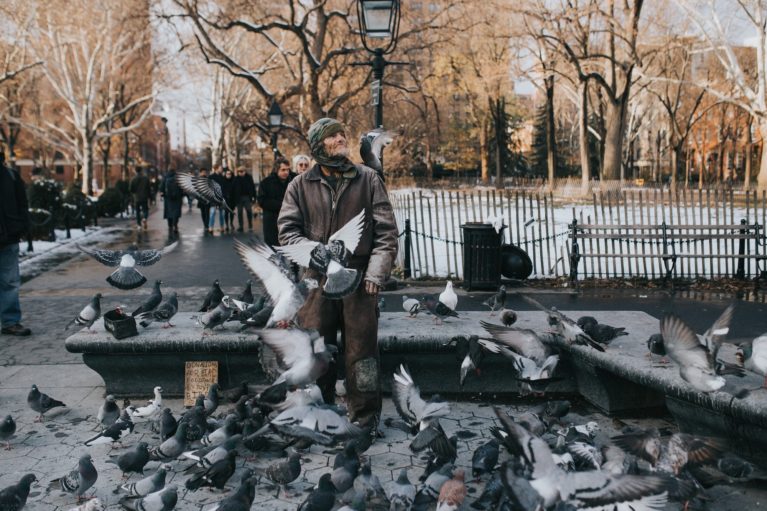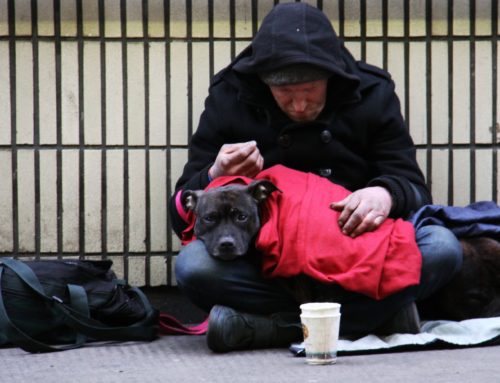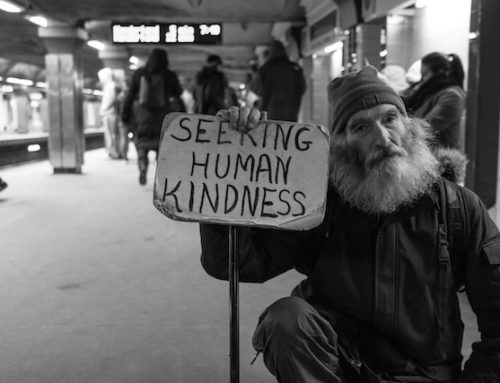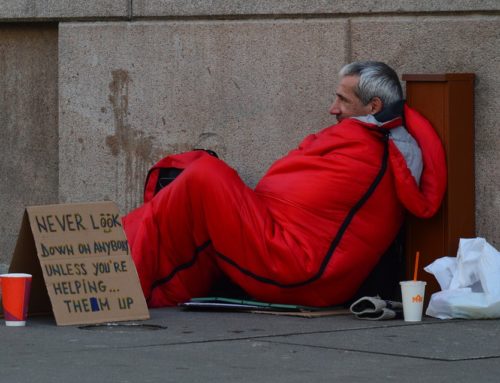This is one of the worst times to be homeless in New York City. Since the onset of COVID-19, millions of people nationwide have been instructed to retreat to their homes and isolate themselves. In these troubling times, homes have become havens, secure buffer zones that protect us against the transfer of disease.
But some don’t have private spaces to retreat to. According to statistics provided by The Bowery Mission, one in every 25 New Yorkers — that’s 70,000 men, women and children — are homeless. The nonprofit reports that nearly 4,000 of those sleep on the street, the subway system, or other public spaces. This is dangerous enough at the best of times. But now, with COVID-19 sweeping through the city, an entirely new weight of risk has come to bear on the city’s homeless population.
New York City is the current epicenter of the COVID-19 pandemic. As of May 10th, 184,417 cases and almost 20,000 deaths have been reported in the city. However, those numbers have been broadly acknowledged as under-representative of the actual infection rate. One journalist for the Gothamist recently explained this statistical problem, writing that “because testing has been limited, the number of people who have actually been infected with COVID is much higher — about ten times the positive cases, according to New York State’s antibody screenings. On 5/2/20, they registered 20% of the sampled population was positive in NYC, and 12% was positive in New York State.”
Those numbers are nerve-wracking enough for those who can isolate themselves from the disease. For those who have less agency and fewer resources with which to protect themselves, the statistics are downright frightening.
“For everyone else, this is ‘quarantine and chill,” homeless Reddit user UNTGaryOaks recently commented for WIRED. “When you’re homeless, there is no quarantine or chill. Unless you’re the type that is comfortable laying on the ground in public.”
Craig Hughes, a social work supervisor at the Safety Net Project, concurred on this viewpoint in an article for Curbed. “The people that are going to be most hurt … are not the people who are running to the Hamptons or running to Beacon,” Hughes commented. “The people who are most hurt by that are people who don’t have options, people on the street, who survive through a kind of shoestring set of resources that are available.”
Even without a global pandemic to worry about, homelessness can — and often does — have a significant negative impact on a person’s health. Those experiencing homelessness rarely have the luxury of a full night’s sleep or proper nutrition. Stress can be a daily companion; mental illness or substance abuse disorders can make days weigh heavier. All of these factors and more can weaken a person’s immune system and make them exponentially more vulnerable to contagious diseases.
Then, of course, are the logistical realities of homelessness. Despite their best efforts to observe social distancing protocols, many shelters and food pantries aren’t set up to provide distanced service. Organizers’ attempts to separate cots or create more space at dining tables come at a trade-off. They can either distance their clients and limit the number of people served, or provide aid to as many people as possible and increase the risk of close contact. A middle ground between the two is difficult to find.
The pressure is particularly intense in New York City, as public bathrooms have shut and soup kitchens shuttered for lack of food and staff. The New York Times reports that shelter population levels have “consistently reached levels seen only a few times in the last decade, and usually only on the most frigid nights of winter.” As of mid-April, 371 shelter residents have tested positive for the virus, 80 percent of whom spent time in single-adult, dormitory-style facilities. The risk is evident — so, what are we doing about it?
Thankfully, steps have been taken to address the issue. The federal CARES Act earmarked $4 billion for homelessness relief during the pandemic, a full seven times the amount that the National Alliance to End Homelessness typically receives.
Local government has also launched efforts to protect New York’s most vulnerable residents. In recent weeks, the city has been renting hotel rooms at an average cost of $174 per night to isolate shelter residents who have symptoms, tested positive, or been otherwise exposed to the virus. At the close of April, Mayor Bill de Blasio announced that the city would have transferred roughly 6,000 shelter residents to hotel lodgings by the start of May. The city has also invested in 24 hand-washing stations and 36 portable toilets for those who avoid shelters.
Social services in New York City have further redoubled their outreach efforts in light of pandemic restrictions and closures. Since the Metropolitan Transportation Authority began to close the subway system at night, New York’s Department of Homeless Services has been working overtime to convince homeless residents who sleep on the trains to transfer into shelters.
With all this in mind, it is clear that our local government is doing all it can to support homeless residents during this troubling time. But the problem is persistent and the stakes high. As the pandemic stretches on, social services need to maintain their efforts to protect New York’s most vulnerable — and receive the resources and funding necessary to do so.








